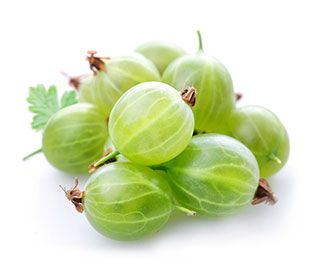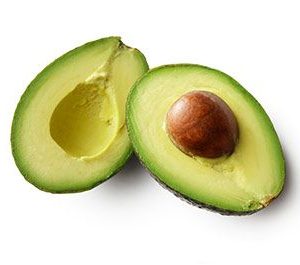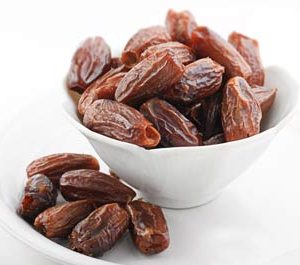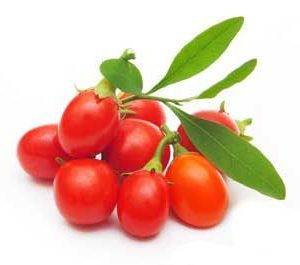Gooseberries are a small, translucent and tart fruit that belong to the same botanical family as currants. While hundreds of cultivars have been developed over the past years, gooseberries are primarily categorized into two main types: American (Ribes hirellum) and European (Ribes glossularia var. uva-crispa).
The American gooseberries are native to Canada and the northern United States. They’re smaller in size and have less flavor, although they’re more resistant against diseases. The sweeter European gooseberries, on the other hand, are native to North Africa and the mountainous areas of western Asia and eastern Europe. They can be as small as a pea or as large as a small egg, in shades of yellow, green, red and white.
All gooseberry varieties grow on thorny bushes. They’re ideal for cold climates, as they can survive freezing temperatures and need the winter chill to produce fruit. If you attempt to grow your own, make sure you plant them in a spot that gets ample amount of sunlight to help their fruits ripen.
There are other fruits called gooseberries even though they do not belong to the Ribes species. These include the cape gooseberry (Physalis peruviana), Indian gooseberry (Phyllanthus emblica) and Chinese gooseberry (Actinidia deliciosa), which is now commonly known as the kiwifruit.
Gooseberries should be stored in small shallow containers and refrigerated to keep fresh for up to three weeks. Ripe gooseberries can be eaten fresh or used as an ingredient in pies, jellies and other desserts. Be sure to consume gooseberries in moderation because they contain fructose, which can be harmful to your health when consumed in excessive amounts.
Health Benefits of Gooseberries
Flavonoids and phenolic acids in gooseberries are found to be beneficial against cancer, diabetes, inflammation, and cardiovascular and neurodegenerative diseases. The fiber content in gooseberries (about 4.3 grams) may help decrease colorectal cancer risk. Gooseberries also contain a healthy dose of scurvy-preventing vitamin C.
Gooseberries are also home to a wide array of nutrients, including folate and vitamins A, B1 (thiamin), B5 (pantothenic acid that’s essential for healthy adrenal glands) and B6 (pyridoxine). Some of the minerals that they contain include calcium (which may help inhibit osteoporosis), magnesium, potassium (to help balance blood pressure levels and maintain your body’s acid-base balance), iron (for reducing the risk of anemia), copper, phosphorus and manganese.
All these compounds are beneficial to the human body, as they may work in slowing down the aging process (mainly because of the phenolic compounds), strengthening eye health and reducing risk for optical problems (thanks to vitamin A). If you want to know more about the nutrients gooseberries offer, take a look at the nutrition chart below:
Gooseberries Nutrition FactsServing Size: 3.5 ounces (100 grams), raw |
||
| Amt. Per Serving |
||
| Calories | 44 kcal | |
| Total Fat | 0.58 g | |
| Saturated Fat | 0.038 g | |
| Trans Fat | ||
| Cholesterol | 0 mg | |
| Sodium | 1 mg | |
| Total Carbohydrates | 10.18 g | |
| Dietary Fiber | 4.3 g | |
| Protein | 0.88 g | |
| Vitamin A15 µg | Vitamin C | 27.7 g |
| Calcium25 mg | Iron | 0.31 mg |
Studies done on gooseberries
Four fruits belonging to the Ribes species were evaluated in a study published in the Journal of Food Biochemistry for their total phenolic and antioxidant capacity in relation to the potential management of hyperglycemia. Quercetin derivatives were found in black currants and green gooseberries, while red currants and gooseberries contain chlorogenic acid.
Another study published in the Postharvest Biology and Technology journal found a variety of polyphenols in the skin and flesh of gooseberries, the majority of which are “flavonol glycosides, anthocyanins and flavan-3-ols.” Researchers also highlighted that gooseberries are “a good source of vitamin C while being low in sugar.”
Gooseberry Fun Facts
Gooseberries can host a serious fungal disease called white pine blister rust, which can kill white pines. Some varieties of currants and gooseberries were federally banned from cultivation in some states, with the prohibition lasting from 1912 to 1966. Gardeners are advised against planting susceptible variants of gooseberries and currants within 1,000 feet (preferably half a mile) of white pine trees because of this problem.
Summary
Despite its benefits, the little gooseberry is quite underutilized in the culinary world. They offer a tart flavor that’s still a favorite in England for jams, jellies, juice and the classic dessert, gooseberry fool.
Rich in antioxidant polyphenols, gooseberries can vary in color, flavor and shape, but they all grow in thorny bushes. They also come with a wide array of nutrients, like fiber, protein and other compounds that make them exceptionally nourishing.







Reviews
There are no reviews yet.